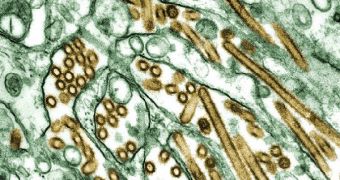Compound 1, also known as NSC89853, is the enigmatic name under which researchers in Hong Kong and the United States have presented a new substance, which they say is able to effectively counteract influenza strains, including the H5N1 that causes avian flu. The compound is said to be able to effectively block the viruses' replication abilities, and may prove to be of great use for authorities in Europe and Asia, which have been battling the pathogens for many years.
“We have found a compound that is different from oseltamivir, but which acts in the same way. An analogy would be like we have a door with a keyhole, but the hole has changed, and the key, in this case oseltamivir, can't lock the door anymore. But we have discovered another keyhole and another key which can lock the door,” Reuters quotes University of Hong Kong microbiologist Leo Poon as telling during a press conference on Wednesday.
The US National Cancer Institute supplied the international research team with a catalog containing some 230,000 compounds, which the experts then thoroughly analyzed. The final list contained some 20 substances that showed promises in preliminary tests. NSC89853 was the ultimate winner, and study teams around the world will now start investigating ways of making the antivirus more reliable and effective. Currently, the main concern is that the H5N1 influenza strain will mutate faster than geneticists can work, and that this compound will be made obsolete in a short time span.
“Given the problems with drug resistance, this compound can be used to develop a new drug,” University of Hong Kong Professor of Pediatrics and Adolescent Medicine Allan Lau added. During the tests, several human cell cultures were separately infected with the seasonal influenza virus, as well as with the H5N1 strain. Each of the 20 compounds were then tested, and Compound 1 proved to be the most effective one in stopping both types of the pathogen.

 14 DAY TRIAL //
14 DAY TRIAL //